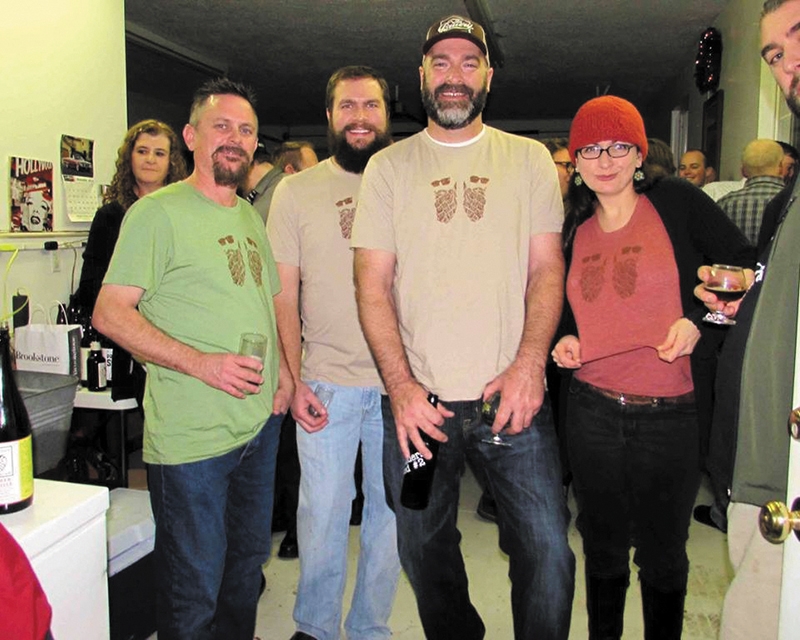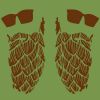The Zion Zymurgist Homebrew OPerative Society is the oldest brewing club in Utah, which makes them pretty special when you think of how this state used to be.
Homebrew Clubs: ZZ Hops
Beer Reviews

With the passage of HB51 in 2009, Utah became the 46th state to fully legalize homebrewing. Gone are the worries about getting arrested for wanting something new to taste—they have gone the way of the private club. Now, we have craft beer in the grocery stores and we have the Internet. There are several homebrew supply shops fighting to get better prices on imported ingredients, and there are bars with dozens of local drafts and over 20 local breweries to visit. But none of this has changed the DIY attitude of ZZ HOPS.
The Zion Zymurgist Homebrew OPerative Society is the oldest brewing club in Utah, which makes them pretty special when you think of how this state used to be. When walking into places like Beer Bar and Beerhive where, as beer lovers, our cup quite literally “runneth over,” it can be easy to forget that not too long ago, everything was different. Back when it was started in the late ’80s, ZZ HOPS provided a much-needed oasis in the land of private clubs, state liquor control and almost zero local breweries (Wasatch Brewery, Utah’s oldest active microbrewery, was started in 1986). For the few proud beer drinkers in the state, selection was almost nonexistent. “There were something like two or three imported brands in the liquor stores,” says Frank Schmuck, a first-generation member who joined in 1992, “and that was it.”
Faced with a beer desert, grassroots efforts began to fill the vacuum. After realizing that people would pay money for the ingredients to make their own beer, Art Frewin started Art’s Brewing Supplies on a little side street in Salt Lake City in 1987. Before that, Schmuck says, “We had to mail order everything from catalogs.” Out of a small but dedicated group of customers, a club of enthusiasts began to emerge. Dan Robison, the earliest joining member SLUG spoke with, remembers helping to start the club’s newsletter, The Flying Carp, which also lends its name to an annual competition among the members. Due to the somewhat dubious legality of homebrewing at the time, many members were uneasy, and the club took on an almost clandestine aspect in its operations. “I remember Dan was religious about only using first names in the newsletter,” says Schmuck. But the club continued to flourish and attract new members. Mike Hahn, the club’s current president, joined in 1994 after hearing about it from Mark Alston, a beer lover himself who started The Beer Nut in 1994 and The Bayou in 2002.
Almost 30 years after its inception, ZZ HOPS is going stronger than ever. With between 20 and 30 active members, monthly meetings, internal competitions and group activities like brewery tours and barrel projects, the club is often on the cutting edge of what’s happening in the Utah beer scene. SLUG spoke with a few of the current members about the group, and, these days, everything seems to be about constantly upping everyone’s game. “The club inspired me to expand my brewing horizons,” says Dave Mahaffey. This sentiment is common. Hahn, as President, helps the club plan out meetings two years in advance and then schedules specific beer styles to be discussed at those meetings. Any member who wants to can bring their version of the style and have it judged by the entire club, in true Beer Judge Certification Program fashion. Several of the members are indeed certified BJCP judges, which is not as simple as just liking beer. Particularly good beers earn their brewers points in the annual ZZ HOPS “Brewer of the Year” competition.
The aspect of rigorously judging beer is one that several members find particularly attractive about the club. “To pick out a specific fault was new,” says Jerry McPhie. “Helping diagnose problems elevated my brewing ability.” The group isn’t focused on the negative, though, and all input is welcomed. Says Troy Jaskowski, “We don’t all exactly agree about what kind of flavors we pick up.” The subjective nature of what one tastes is part of anyone’s love of beer, but when brewing for other people’s consumption, different points of view are essential. The honest feedback in a positive and constructive environment has created a club where many of the members have won medals in both local and national homebrewing competitions, but the drive toward education doesn’t stop there. “We sample, evaluate and talk about everything,” says Joe Aruscavage, one of several members with technical backgrounds and the group’s lead yeast wrangler. For each meeting, a member is assigned to research a topic and present it to the group, whether it’s a beer style, a brewing technique or a broader topic like water chemistry.
Recently, members have done tours of the upcoming 2 Row Brewing started by former member Brian Coleman, and checked out the new canning line at the Utah Brewer’s Cooperative. They’ve managed to acquire a whiskey cask from Epic Brewing that was used for their Imperial Stout, which they filled with a sour dark ale and a few dozen pounds of black currants. They’ve worked together on a collaboration beer with The Annex and have more planned with other local breweries. That spirit is the same as when Schmuck joined: “The principal thing was experimentation—always pressing against the limits on things,” he says. While beer selection in Utah has improved, when talking with this thirsty club, one gets the impression that it will never be enough.





